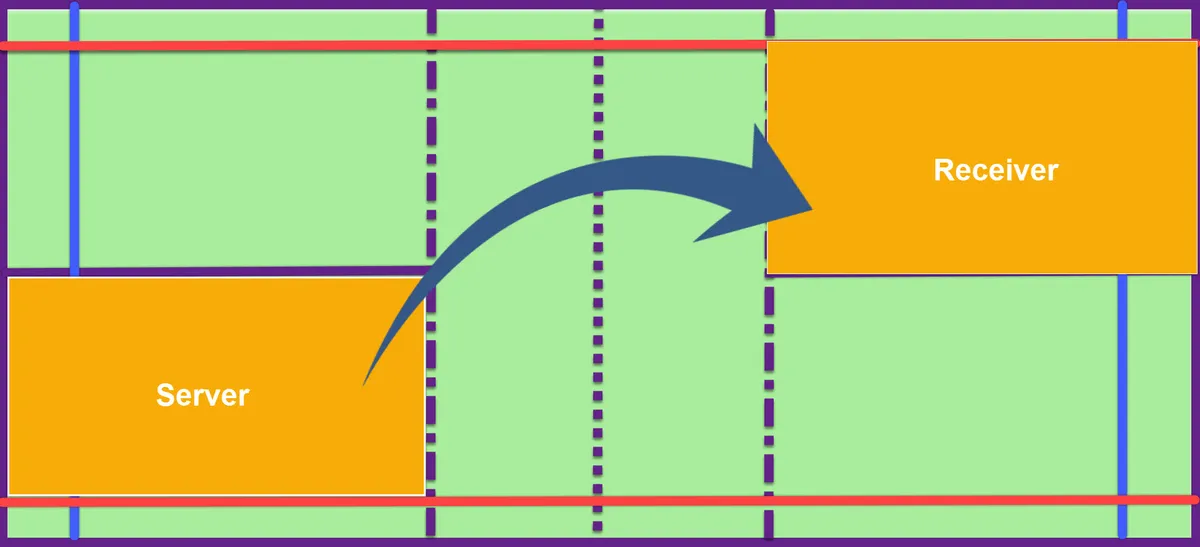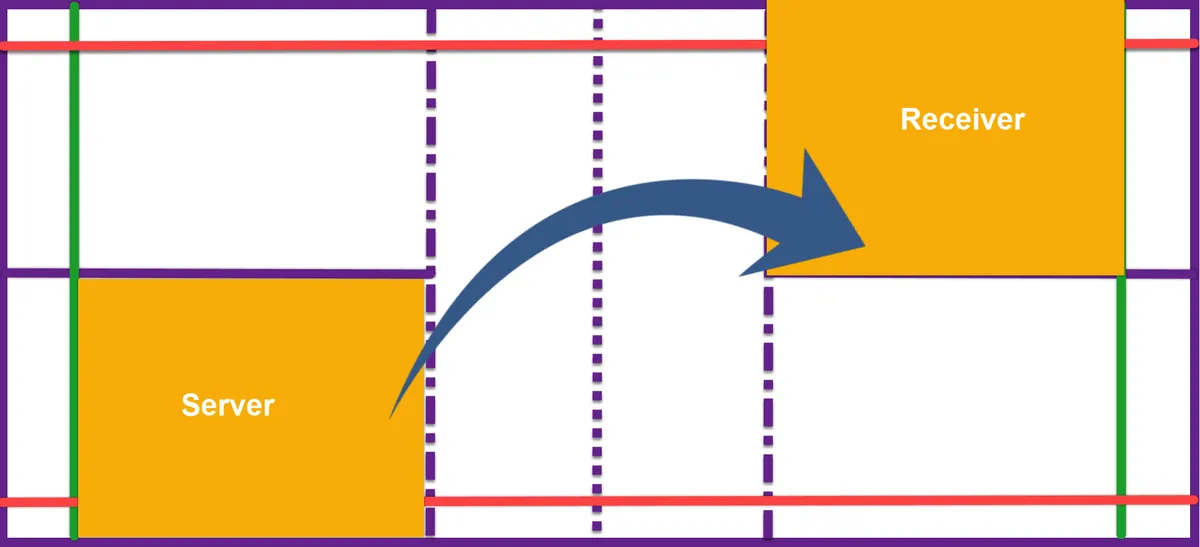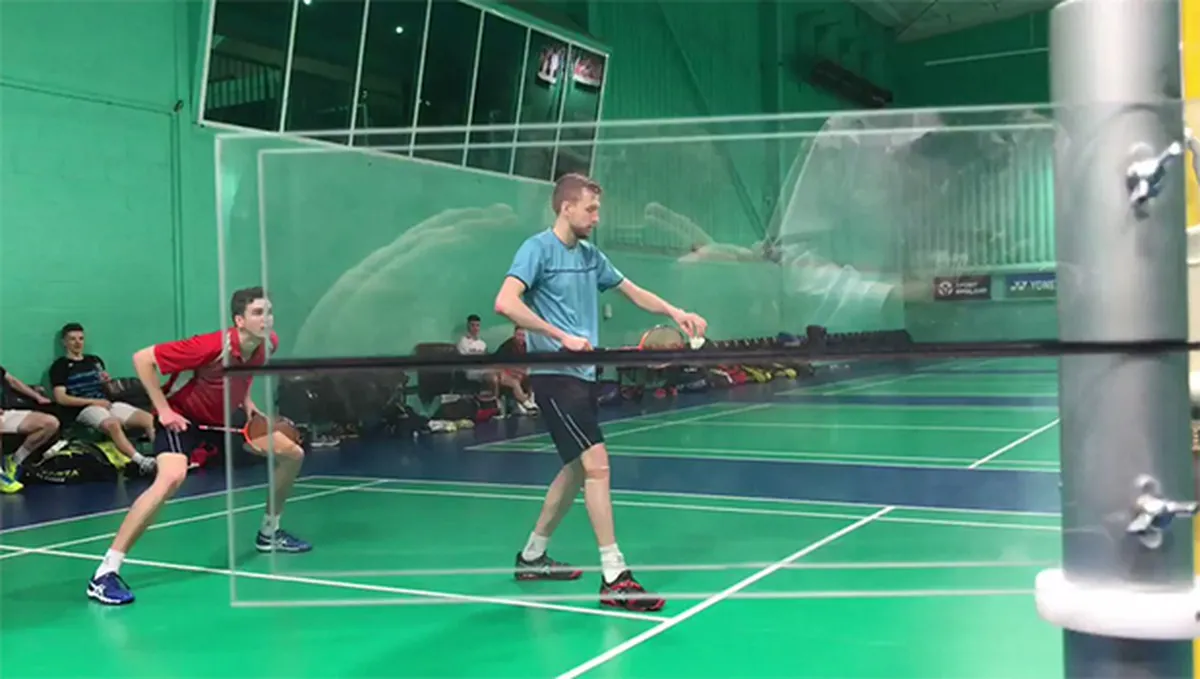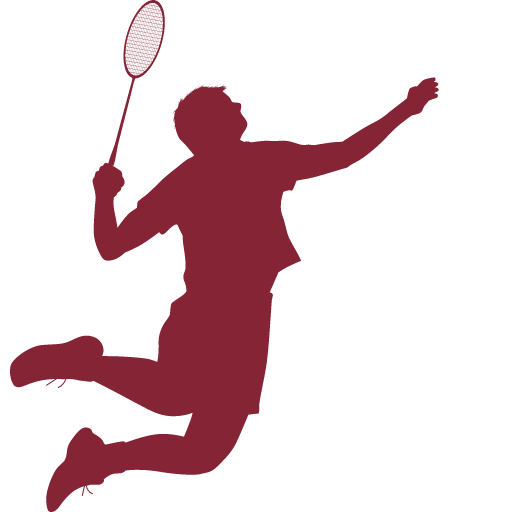The badminton serve is the most important shot in a rally. Let me repeat that, the serve is the most important shot in badminton. And the short serve is the most difficult shot to master in badminton. If you come across an opponent that has mastered the short serve at the club level, be scared! I find that most beginner and intermediate players tend to emphasize getting good at the power shots (aka smashes and drives).
Wrong choice.
The first shot you should master is the serve, it will win you more rallies than any other shot.
Period.
The first step to mastering the badminton serve is to understand badminton serving rules. Because they place limitations on how you serve, and service faults will lose you points.
In this post, we are going to look at the badminton serving rules for both singles and the double versions of the game.
The easiest way to remember the badminton serving rules is to recognize that they are rules on where, who, and how you serve.
The rules first define where to serve. This is done through boundaries, or lines on the court. Next, badminton serves rules delimit who is going to serve. The goal is to alternative the serve, and this is achieved through point rotation. The how to serve rules are basic limitations on how you hold racket and shuttle when performing the badminton serve. Let’s look at each category in depth.
Badminton Serving Rules on Where to Serve
The first fundamental rule of the badminton serve is you must serve cross-court. There is a similar rule in many net sports (tennis, volleyball, table tennis). So you always serve diagonally. The server and the receiver must be in their respective diagonal courts.
And, a serve must be directed to and be from diagonal courts. In badminton doubles, your partner can stand anywhere in the court (a good position is smack in the middle of the court) as long as they don’t “interfere” with the serve.
Here are 2 diagrams showing the right position of the server and receiver.


3 important notes:
1) The server cannot stand on the line – that’s a fault.
2) Note that the valid service court for badminton singles game is long and thin, and that of badminton doubles game is short and fat.
3) That if the shuttle lands on the line in the receiver’s valid court, it’s considered to be in.
The second and final rule is that for love (zero) and even number server scores, you server from the right court. When the server/the servers’ double team has an odd score, they always serve from the left court. So, every time you score a point, you have to change your service position. In the single game, your opponent takes a position diagonally across from you. But in badminton double your opponent’s stay in their respective service court from where they played the previous rally.
Badminton Service Rules on Who Serves
For badminton singles, it’s the rule is straightforward. You toss a coin to decide who is going to serve the first rally, and whomever wins the rally serves the next one. As long as you keep winning the rallies, you always serve. If you lose, your opponents gets a point and the serve.
For badminton doubles it’s a little complicated. First, the above rule still applies, you toss a coin to decide who is going to serve the first rally (keep in mind that the first rally is always served from the right had side of the court). Then you decide who is going to the right-hand court and left-hand court server. Now, you’re all set for the first rally.
Once the first rally is over, there are two possible scenarios. The servers’ team could win the rally or the receivers’ team could also win the rally. Just as in the singles version of the game, whichever teams wins the rally also wins the serve. Now if the team that served the rally also win the rally, they get a point and retain the serve. And the person that served the rally rotates to the opposite side of the court to serve for the next rally.
If the team that received the serve won the rally, they get a point and also win the serve. In deciding who’s going to serve, they have to consider 2 things.
First, what was their respective service court in the previous rally?
Secondly, what’s their score?
If their score is love (zero/no score), or an even number, the teammate that was (in the previous rally) on the right-side service court gets to serve. If their score is odd, the player that was on the left side service court serves.
Please note that if a player has served or received out of turn; or has served or received from the wrong service court this is considered a service error (it’s not a fault – there’s no point penalty) and the remedy is to correct the mistake but the existing score stands.
Badminton Service Rules on How to Serve

Finally, there are rules on how to serve. The first rule is that both the server and receiver must have both feet in a stationary position on the court and cannot move until the shuttle has been served (hit by the server). In other words, the server and receiver must be stationary at the moment the shuttle is served.
The second rule is that the shaft of the server’s racket must be pointing in a downward direction when it comes into contact with the shuttle.
The third rule; at the instant of being hit by the server’s racket, the entire shuttlecock should be below 1.15m from the surface of the court. This is a recent change to the rule that has simplified the previous service height rule: “the whole shuttle must be below the server’s waist when hit by the racket.”
We have implemented this new rule at our club by placing red tape on the end posts that mark the 1.15m mark. Ideally, when we get new nets, they will come with a line that marks the 1.15m from the surface of the court.
Fourth rule, you must initially hit the base of the shuttle and the serve stroke must be in one continuous motion. No fits and starts!
Fifth rule is a simple one, the serve has to be over the net and land on your opponent’s court beyond or on the service line.
Commonly Seen Service Faults
When a service fault is called the offending’s party opponent is awarded the rally. Here are the common service faults that I come across.
1. The receiver attacks the net before the shuttle is hit.
2. The racket handle (shaft) faces up when the shuttlecock is hit.
3. Two-stage service action (not a continuous single action).
4. When it is hit, the shuttlecock is higher than the waist of the server (an imaginary line under the bottom rib of the server).
Commonly Seen Service Lets
As opposed to a fault, a service let does not earn either player or team points. It means that the rally shall not count and the player who last served serves again.
- Shuttle gets stuck on the net. Happens a lot of the net has a large hole. Note, if the shuttle passes through the net of under it, it considered out of play.
- The server serves before the receiver is ready. However, if the receiver attempts to return the serve, they are considered to be ready.
- Base of the shuttle disintegrates and separates from the rest of the shuttle. This happens a lot, especially during rallies.
Sorry for the long, complicated and winding post. If you need clarification, please comment below and I shall endeavor to shed light on the badminton serving rules.
Over to you.


Leave a Reply